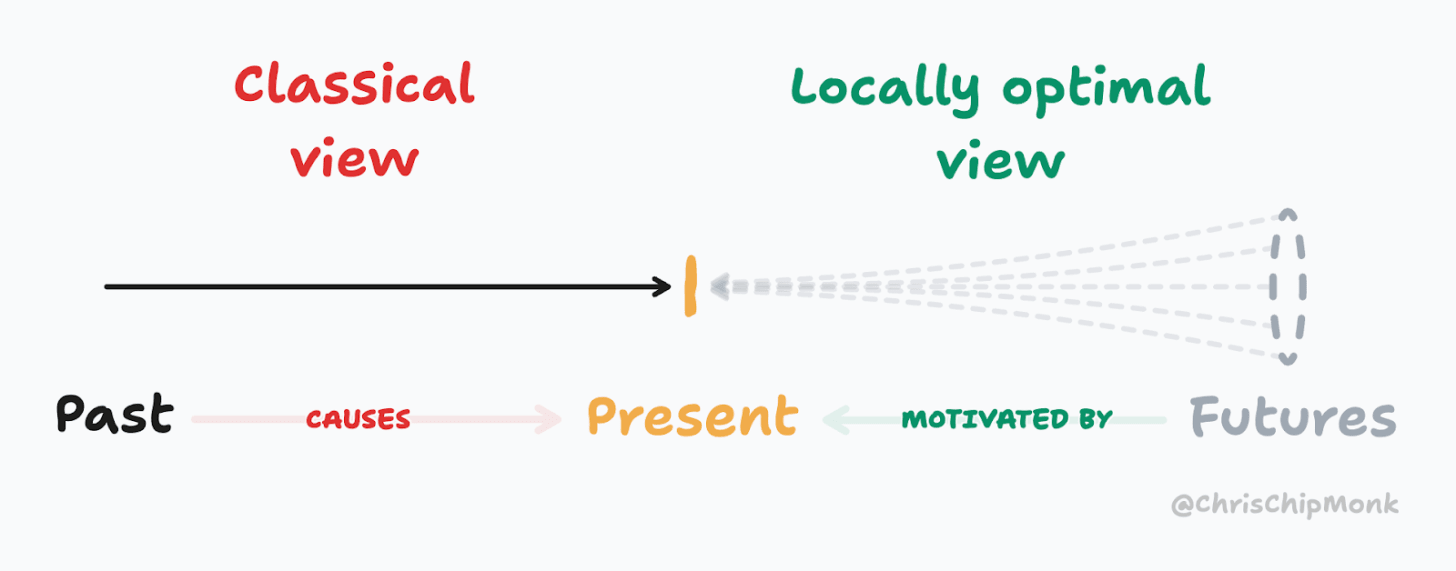2022.
I couldn’t tell you what I did for five months. I watched my friend’s dog and drafted some posts I never published... but where the rest of the time went? I don’t know.
I remember wondering: “Why am I withdrawing from everything? Why are my emotions so irrational?”
Social interactions weren’t going as I wanted: I couldn’t make friends, crushes ghosted me, and whenever I set boundaries with others they got upset.
I didn’t realize it at the time, but interacting with others felt tremendously unsafe.
Naturally, when I’m withdrawn and low on energy, I don’t want to interact with other people much.
...so, if interacting with other people was unsafe, then one way for me to not have to interact with them and be safe was to... be withdrawn.
I thought my problem was the withdrawal. But really withdrawal turned out to actually be a solution to a different problem.
So I unlearned the insecurities that made social interaction feel unsafe. I haven’t needed to be withdrawn since.
Incidentally, while I was withdrawn, I had moved to the middle of nowhere. Conveniently miles away from anyone I might’ve wanted to talk to. But within three weeks, I moved back to a big city and had about 10x as much social interaction.
After noticing this pattern—the problem wasn’t the problem, it was a solution—I started seeing it everywhere.
Any persistent issue can be understood from two different points of view:
In the Classical view: Past experiences “caused” the present state. “My withdrawal is an unfortunate consequence of previous trauma or bad experiences, which I have no control over.”
And the Locally Optimal view: My state is incentivized by what my nervous system is currently acting to avoid. Withdrawal isn’t random, it’s strategic.
In the classical view, you look backwards: the past caused the present issue, and the past can’t be changed… so rest in pieces I guess.
In the locally optimal view, you look forward: your present state is shaped by the futures you want to avoid and the futures you want to achieve.
In both views, you can feel stuck. But in the first the past keeps you trapped; in the second, you just haven’t found the way out yet: you haven’t found a vector that addresses every incentive keeping you there. The vector that makes the past irrelevant.
The locally optimal view is a hopeful view: your suffering isn’t random, it’s functional. And since it’s functional, then there are probably other strategies that achieve the same functions but with less suffering.
It’s like the efficient market hypothesis for emotional issues: “If there were zero downsides to resolving this issue, then why hasn’t it resolved itself already?” Insecurity that’s lasted for years tends to be locally optimal.
Just like how my nervous system had settled on a solution: stop interacting. You can’t get hurt if you don’t engage!
Was it globally optimal? Absolutely not, it sucked. But was it locally optimal given everything else? Probably!
So it seems my emotions weren’t “irrational” after all…
.png)







